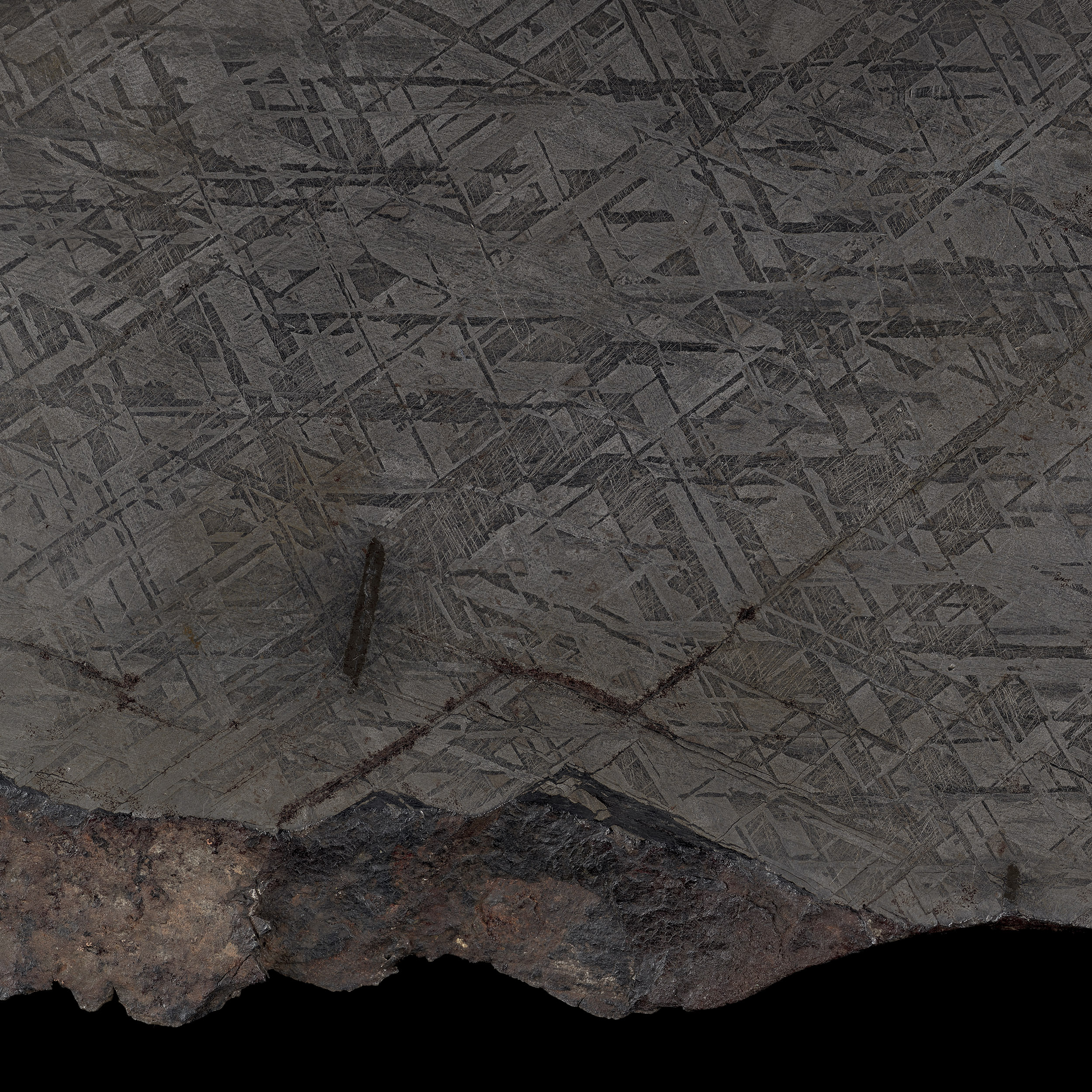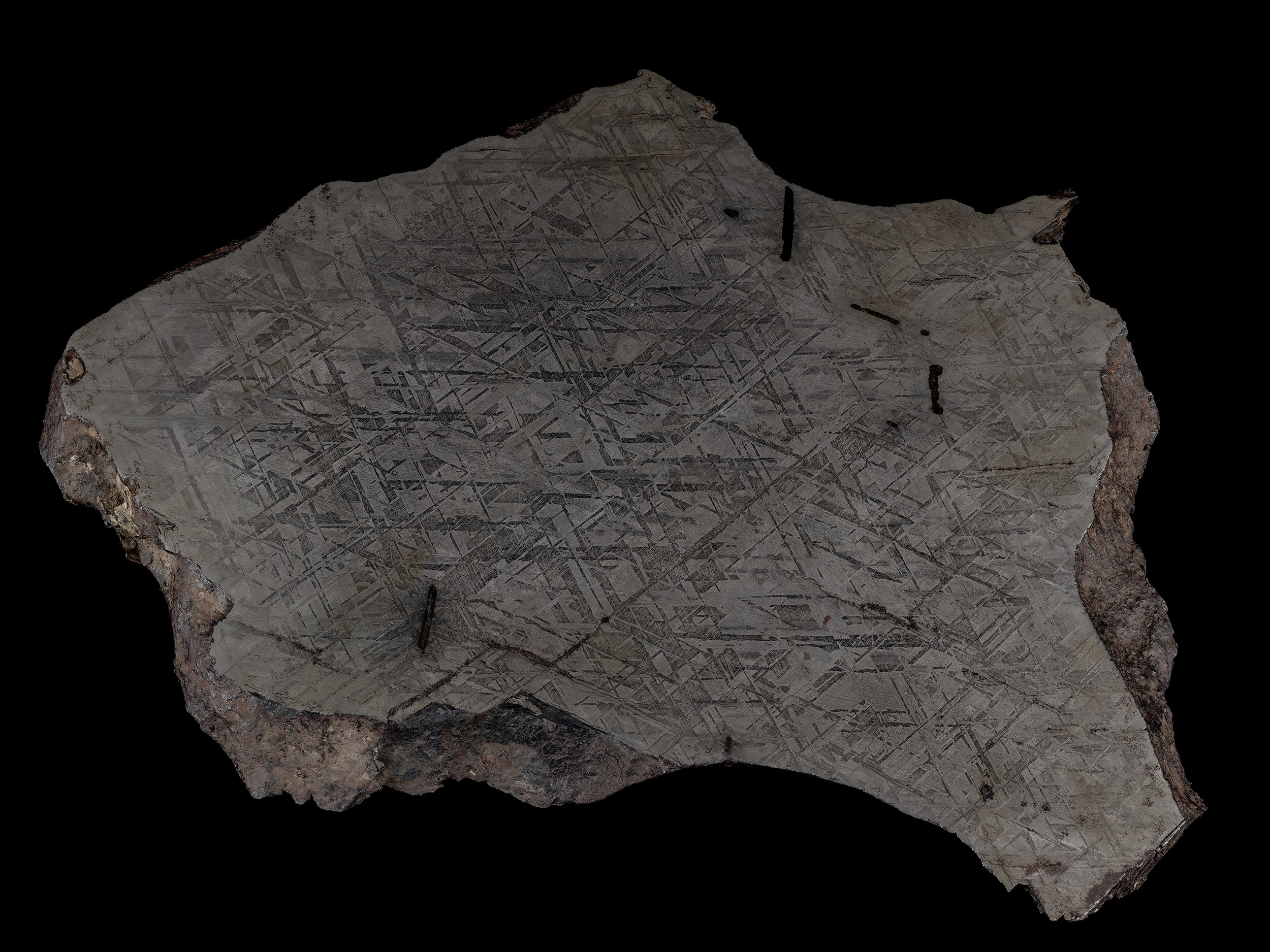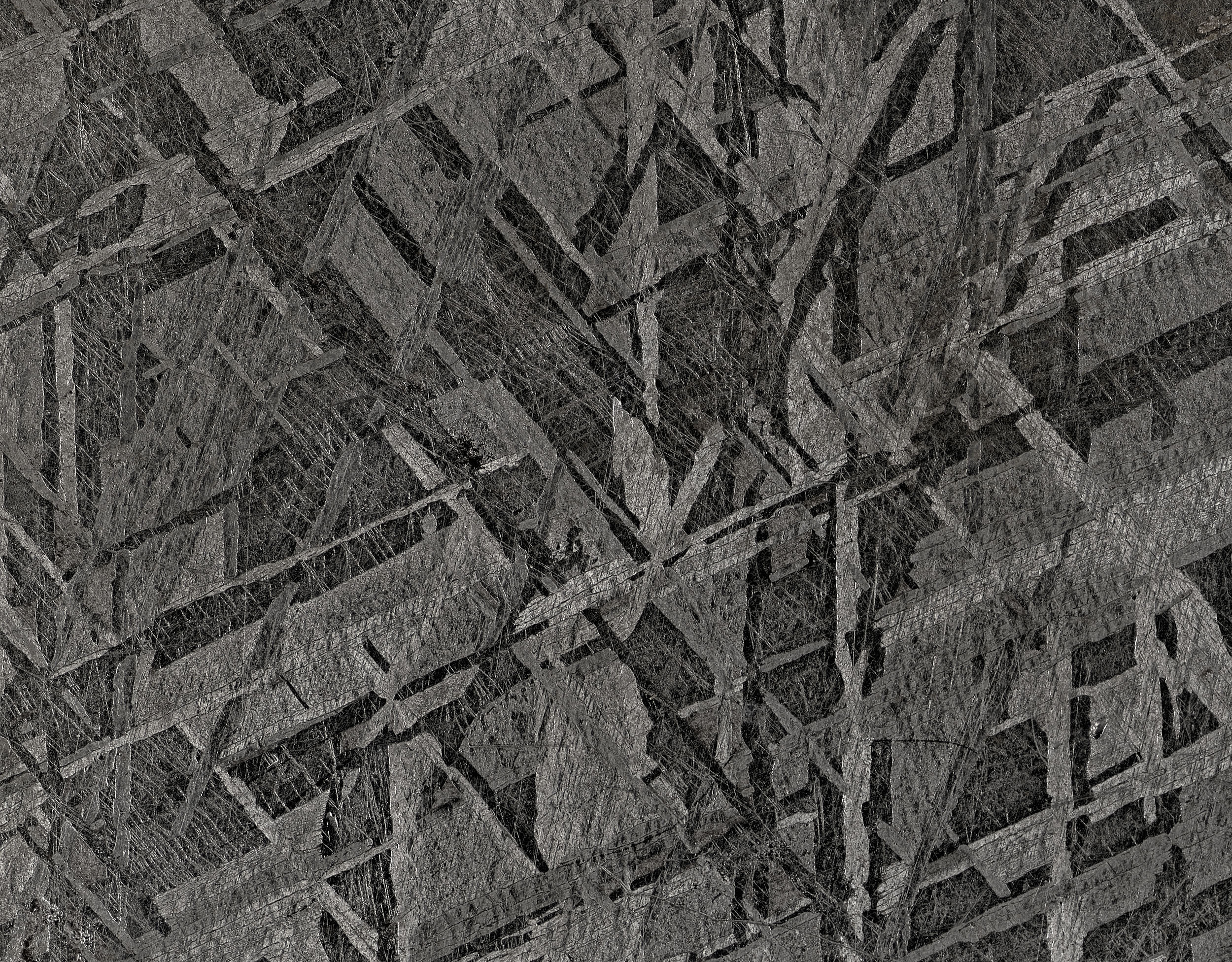




SOURCE
This sequence of images are captures from one of the fragments collectively
known as the:
“ Gibeon (full slice) Nickel iron meteorite that fell in prehistoric times in Namibia. It was named after the nearest town: Gibeon. The meteorite was discovered by the Nama people and used by them to make tools and weapons, including heads for their assegais.
The triangular pattern in the texture of iron-nickel meteorites, called the Widmanstätten pattern, formed more than 4.5 billion years ago as the metal cooled. One iron-nickel mineral, kamacite, formed thin layers along the surface of crystals of another, taenite, which contains less nickel.”
Meteorites are the principal source of extra-terrestrial off world material. Shattering on impact with earth meteorite fragments are epic recordings of time. They lock time at enormous intervals. They give us clues about the deep space humans inhabit.
When I held the Gibeon meteorite fragment in my hands for the first time in 2013, the Widmanstätten pattern presented like organised code we have yet to decipher. Probability suggests these are amongst the oldest sequences of patterns we have on this planet.
“ Gibeon (full slice) Nickel iron meteorite that fell in prehistoric times in Namibia. It was named after the nearest town: Gibeon. The meteorite was discovered by the Nama people and used by them to make tools and weapons, including heads for their assegais.
The triangular pattern in the texture of iron-nickel meteorites, called the Widmanstätten pattern, formed more than 4.5 billion years ago as the metal cooled. One iron-nickel mineral, kamacite, formed thin layers along the surface of crystals of another, taenite, which contains less nickel.”
Meteorites are the principal source of extra-terrestrial off world material. Shattering on impact with earth meteorite fragments are epic recordings of time. They lock time at enormous intervals. They give us clues about the deep space humans inhabit.
When I held the Gibeon meteorite fragment in my hands for the first time in 2013, the Widmanstätten pattern presented like organised code we have yet to decipher. Probability suggests these are amongst the oldest sequences of patterns we have on this planet.
The Gibeon patterns have a
spatial composition suggesting a three dimensional view of a
grid or cube like structure. It looks like a complex schematic drawing
where we can view multiple data layers.
Early Sumerian tablets and other ancient mark making languages are very abstract in their composition and have been interpreted.
“William Burroughs wrote, “language is a virus from outer space.” This is a thought-provoking image. Like a virus, a particular language is not part of the host's own genome, but it uses the host to spread itself.”
These images are composites of nine macro images. There are three separate images two are focus stacked the other is a collage of nine separate macro details.
The sequence of meteorite details have been processed using various software tools with a focus on delineating the pattern. My further aim is to break these patterns down into graphic components for printing on a larger scale.
Photography Malcolm Brown 2013 and 2023.
These images have been reprocessed, remixed and adapted from images photographed by Malcolm Brown for the University of Edinburgh Heritage Collections.
Early Sumerian tablets and other ancient mark making languages are very abstract in their composition and have been interpreted.
“William Burroughs wrote, “language is a virus from outer space.” This is a thought-provoking image. Like a virus, a particular language is not part of the host's own genome, but it uses the host to spread itself.”
These images are composites of nine macro images. There are three separate images two are focus stacked the other is a collage of nine separate macro details.
The sequence of meteorite details have been processed using various software tools with a focus on delineating the pattern. My further aim is to break these patterns down into graphic components for printing on a larger scale.
Photography Malcolm Brown 2013 and 2023.
These images have been reprocessed, remixed and adapted from images photographed by Malcolm Brown for the University of Edinburgh Heritage Collections.